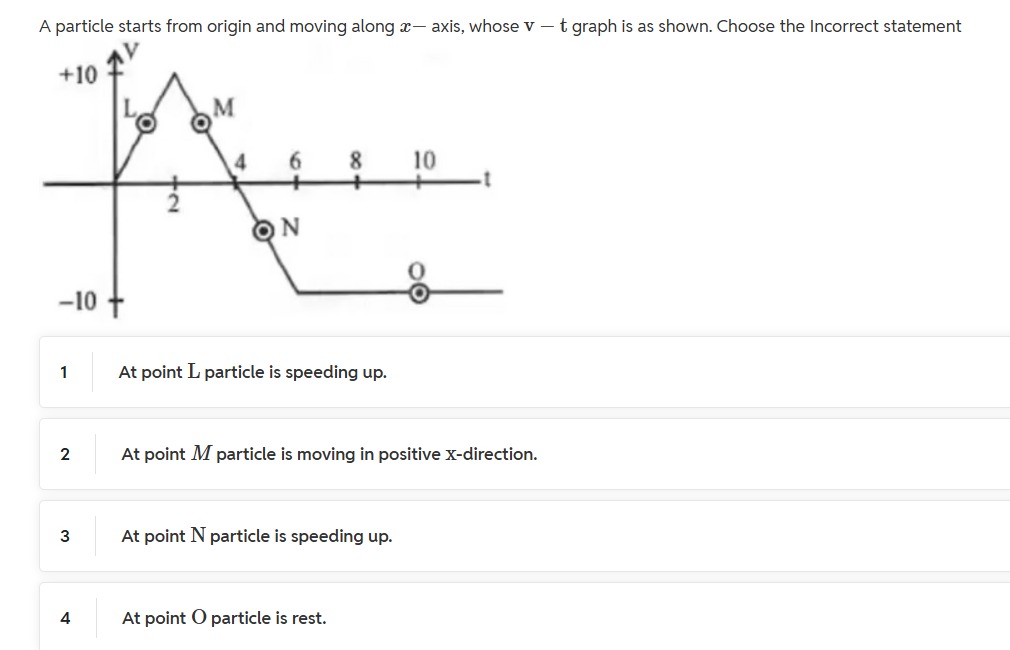Question
Question: A particle starts from origin and moving along $x-$ axis, whose $v-t$ graph is as shown. Choose the ...
A particle starts from origin and moving along x− axis, whose v−t graph is as shown. Choose the Incorrect statement

At point L particle is speeding up.
At point M particle is moving in positive x-direction.
At point N particle is speeding up.
At point O particle is rest.
At point O particle is rest.
Solution
The solution involves analyzing the given velocity-time (v−t) graph to determine the motion of the particle at specific points.
- Speeding up: A particle is speeding up if its speed (magnitude of velocity, ∣v∣) is increasing. This occurs when the velocity (v) and acceleration (a) have the same sign. From a v−t graph, acceleration is the slope of the graph.
- Direction of motion: The sign of the velocity indicates the direction of motion. Positive velocity means motion in the positive x-direction, and negative velocity means motion in the negative x-direction.
- Rest: A particle is at rest when its velocity is zero (v=0).
Let's analyze each statement:
-
At point L particle is speeding up. Point L is at t=1. From the graph, at t=1, the velocity v is positive and increasing. The slope of the v−t graph at L is positive, indicating positive acceleration. Since both v and a are positive, the particle is speeding up. This statement is correct.
-
At point M particle is moving in positive x-direction. Point M is at t=3. From the graph, at t=3, the velocity v is positive. A positive velocity means the particle is moving in the positive x-direction. This statement is correct.
-
At point N particle is speeding up. Point N is at t=6. From the graph, at t=6, the velocity v is negative. The slope of the v−t graph at N is negative, indicating negative acceleration. Since both v and a are negative, the particle's speed is increasing. Thus, the particle is speeding up. This statement is correct.
-
At point O particle is rest. Point O is at t=10. From the graph, at t=10, the velocity v is −10. For the particle to be at rest, its velocity must be zero. Since v=−10=0, the particle is not at rest. This statement is incorrect.
Since the question asks for the incorrect statement, option 4 is the answer.
